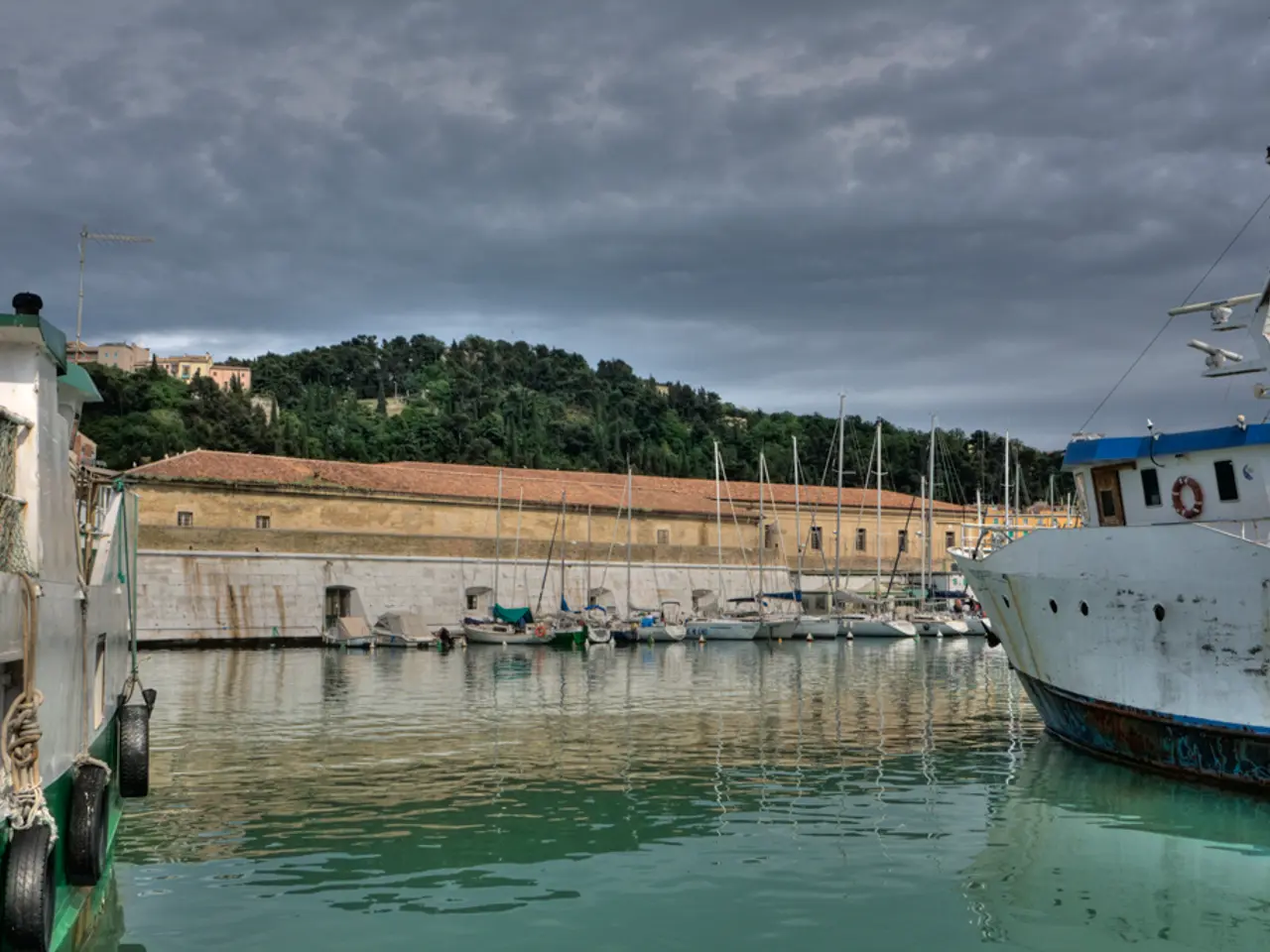Rapid, Scalable Multi-Sensor Sub-Bottom Profiling in the Caribbean: Meeting the Urgent Demand for Coastal Depth Mapping through Deep Learning and Cloud Technologies
In the Meso American-Caribbean Sea region, recent advancements in satellite-derived bathymetry (SDB) methods, spearheaded by Project Trident, have significantly improved the collection and dissemination of up-to-date coastal bathymetry data.
Project Trident, a groundbreaking initiative, harnesses the power of cutting-edge satellite imagery and algorithms to produce accurate bathymetric maps in areas where traditional in-situ surveys are limited or costly. This approach enables more frequent, wide-area coverage with improved resolution and timeliness compared to older methods.
The impact of these advancements is far-reaching. Improved data accessibility and sharing facilitates the open exchange of current coastal bathymetry data among regional stakeholders, promoting collaborative marine spatial planning and environmental monitoring. Enhanced disaster preparedness is achieved through accurate, up-to-date bathymetric maps that help model coastal flooding, storm surges, and tsunami propagation more precisely, which is critical for early warning systems and evacuation planning. Better disaster relief and response is made possible through real-time bathymetry data that improves navigation safety for relief vessels and helps assess underwater damage to infrastructure such as ports and seabeds, supporting targeted and efficient recovery operations.
The Trident deep learning model processed over 17,000 applicable Sentinel-2 images from 2017 onwards, creating a massive multi-image, multitemporal composite of coastal waters in the region. This immense effort, which would have taken longer than a year employing previous methods and used only 1 percent of the imagery available in the Sentinel archive, was completed in a matter of weeks by applying Trident tools and cloud computing resources for rapid data processing.
The Caribbean GeoPortal and the MACHC-IOCARIBE Seabed 2030 Strategy are large-scale data-sharing initiatives focused on gathering and disseminating timely geospatial data in the region. The project used this data to produce approximately 45,000 square kilometers of 10-meter resolution SDB.
As the era of space-based hydrographic surveying continues to evolve, methods will advance quickly, and debate and discussion about standardizing these technologies will continue. The ultimate goal is to produce a global bathymetry model to have much-needed data in place before disasters strike. However, it is worth noting that specific detailed results or citations of Project Trident's outputs were not found in the provided search data, indicating current public documentation may be limited or pending publication.
Further verification could be sought from dedicated oceanographic, satellite remote sensing, or regional disaster management agencies to obtain precise metrics on Project Trident's data resolution, coverage, and operational integration. In the Meso American-Caribbean Sea region, where only 20 percent of the Caribbean Sea has amassed bathymetry data, the need for accurate, up-to-date data for disaster preparedness and relief efforts is undeniable.
In late 2020, TCarta deployed Trident technology in the Red Sea coastal area, integrating deep learning technology and cloud computing resources to enhance the scalability of the multitemporal composite technique. This expansion of Trident technology to other regions signifies a promising future for accurate, timely, and cost-effective bathymetric data, aiding in the preparation and response to coastal disasters worldwide.
- The advances in satellite-derived bathymetry (SDB) methods, like those by Project Trident, are significant in the realm of science, particularly environmental science.
- The hydrographic survey techniques employed by Project Trident leverage cutting-edge satellite imagery and algorithms, enabling cost-effective data collection in coastal zones.
- The increased resolution and timeliness of SDB data contribute to effective climate-change studies, helping scientists better understand the impact of rising sea levels.
- Renewable-energy development can benefit from improved bathymetric data, as it aids in locating marine renewable resources and minimizing harm to the environment.
- Improved bathymetry data can influence various industries, as accurate maps can guide resource extraction, shipping routes, and infrastructure planning.
- The financial sector can leverage bathymetric data in personal-finance decisions, real-estate investments, and businesses related to home-and-garden, housing-market, and even data-and-cloud-computing.
- In terms of environmental-science, the dissemination of up-to-date bathymetry data aids in monitoring water quality, biodiversity, and overall ecosystem health.
- Technology and cybersecurity also play crucial roles in managing and protecting the vast amounts of bathymetric data that are collected.
- The benefits of accurate bathymetric data extend to people's lifestyles, as it can promote sustainable living by providing insight into coastal erosion, flooding risks, and wetland preservation efforts.
- Investing in renewable-energy projects that tap into the potential of offshore wind farms, for instance, becomes more feasible with access to detailed bathymetric data.
- As our world grapples with climate-change, the need for data to guide disaster preparedness and relief efforts cannot be understated, especially in regions like the Meso American-Caribbean Sea.
- By enhancing disaster preparedness, bathymetric data aids in the development of early warning systems for coastal flooding, storm surges, and tsunamis.
- In the face of disasters, accurate, up-to-date bathymetric maps empower emergency personnel to navigate relief vessels more safely and assess underwater infrastructure damage, expediting recovery efforts.
- Artificial-Intelligence, such as the Trident deep learning model, is instrumental in the rapid processing of satellite-derived bathymetry data for expedited disaster response.
- Sports, like car-racing, golf, and football (soccer), can also benefit from more accurate bathymetric data, as it improves weather-forecasting and weather-analysis for better event planning and safety.
- In addition to providing bathymetric data for disaster preparedness and relief efforts, Project Trident's work has expanded to the Red Sea coastal area, showcasing its global scalability.
- The advancement of Trident technology in various coastal regions highlights its potential for improving upon traditional hydrographic surveying methods across the globe.
- As space-based hydrographic surveying advances, there will be active discussions and debate about standardizing these technologies to establish a reliable global bathymetry model.
- The goal of developing a comprehensive global bathymetry model aims to ensure that much-needed data is readily available before disasters strike, reducing potential casualties and damage.
- Despite a lack of specific detailed results or citations of Project Trident's outputs in the public domain, the impact of its work in the Meso American-Caribbean Sea region has been undeniably significant.
- To verify Project Trident's data resolution, coverage, and operational integration, experts from dedicated oceanographic, satellite remote sensing, or regional disaster management agencies can be consulted.
- In regions like the Caribbean Sea, where only a fraction of the sea floor has been surveyed, accurate bathymetric data plays a critical role in ensuring preparedness and response to coastal disasters.
- As sporting events occur in coastal zones, accurate bathymetric data can aid in higher-quality weather forecasts and event safety planning, such as in the MLB, NBA, NHL, NFL, WNBA, and tennis tournaments.
- The sports-betting industry can indirectly benefit from more accurate bathymetric data, as improved weather forecasting can impact game postponements, cancellations, and other factors that may influence betting odds.
- In the realm of technology, continuing advancements in Trident's hydrographic surveying techniques could lead to new capabilities in sports analysis, especially in sports that incorporate water, such as the Olympics' mixed-martial-arts and auto-racing competitions.




